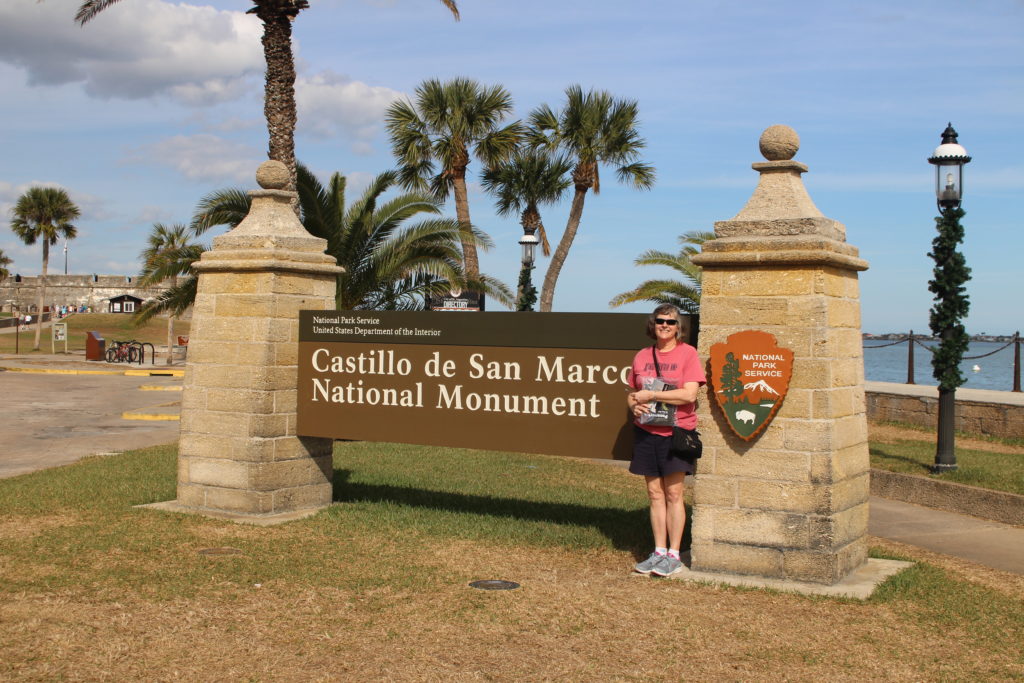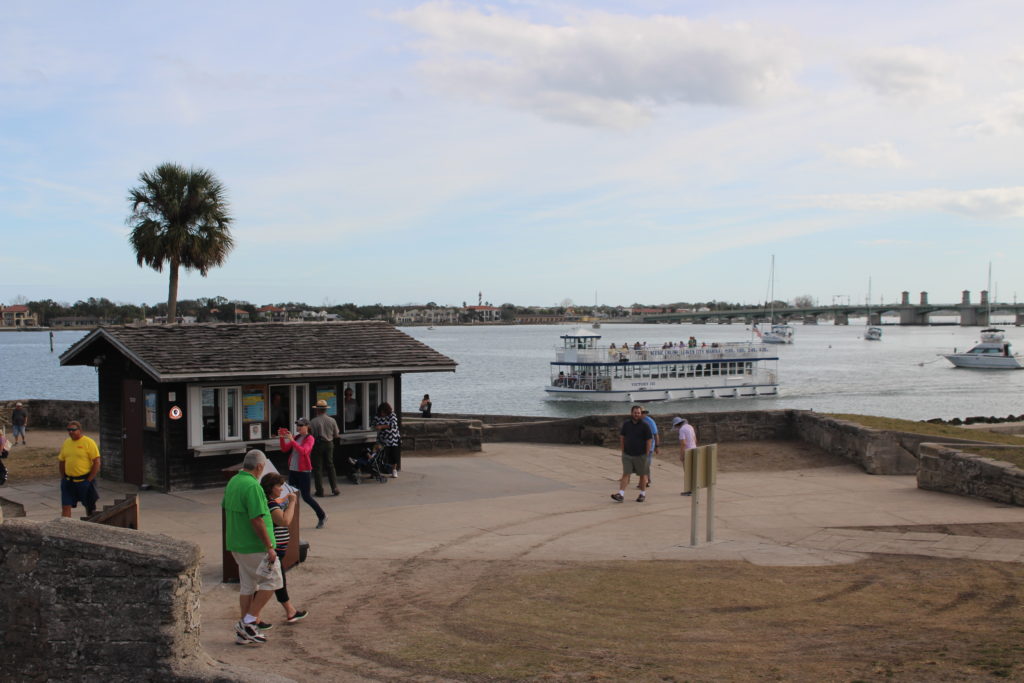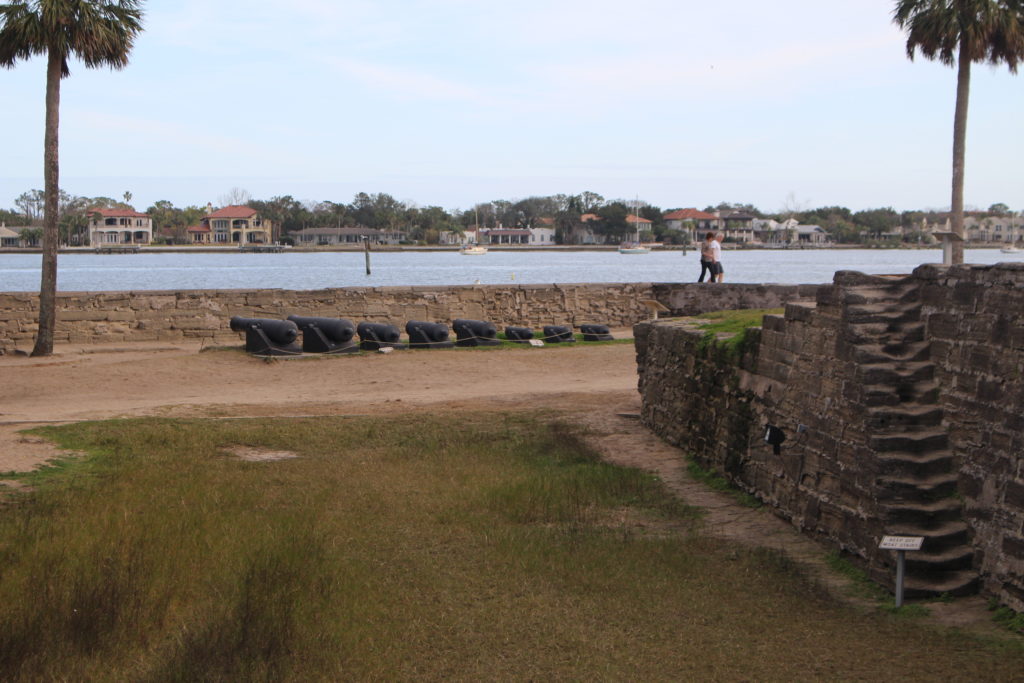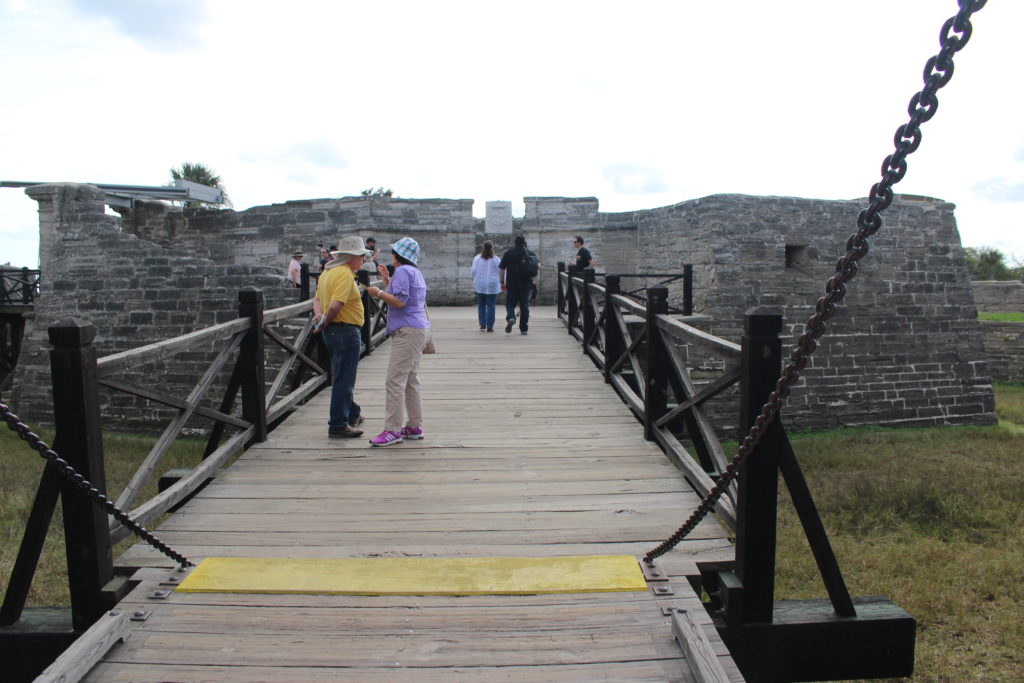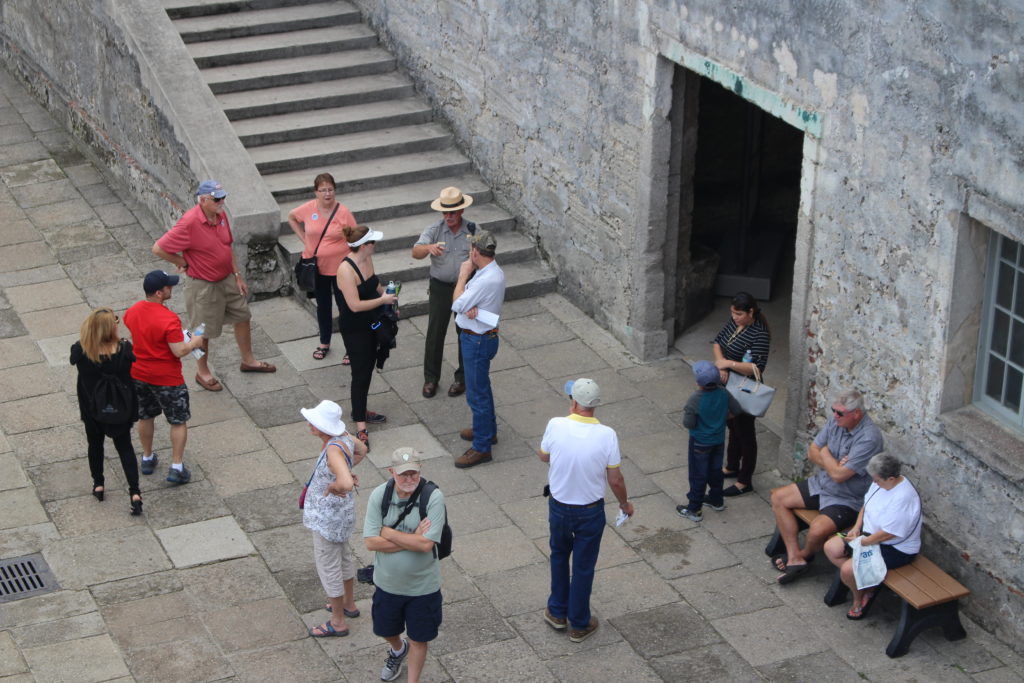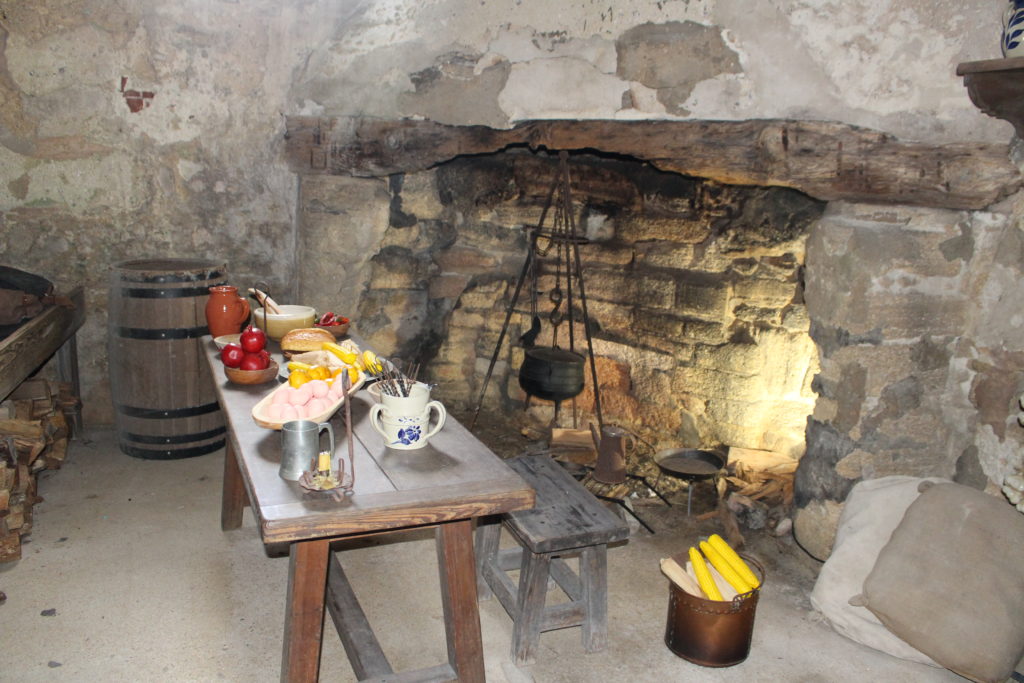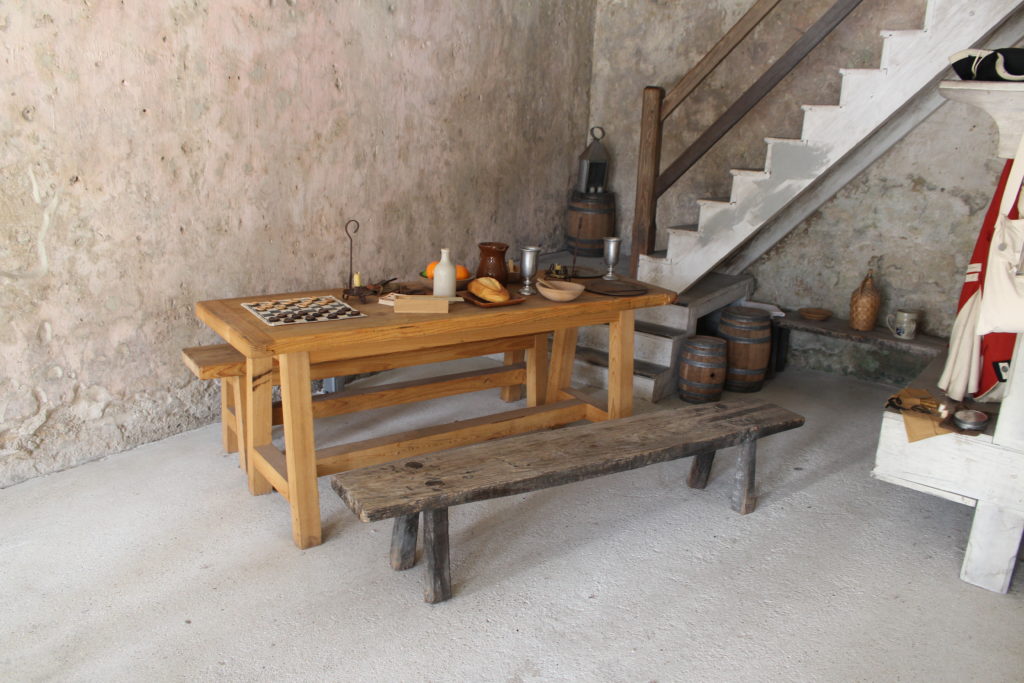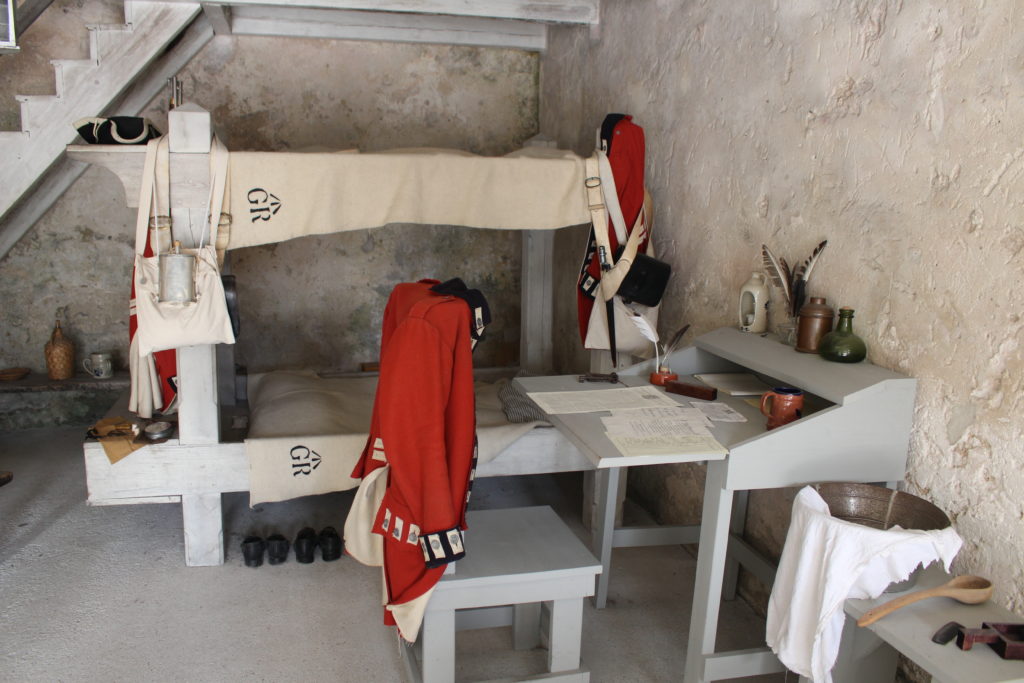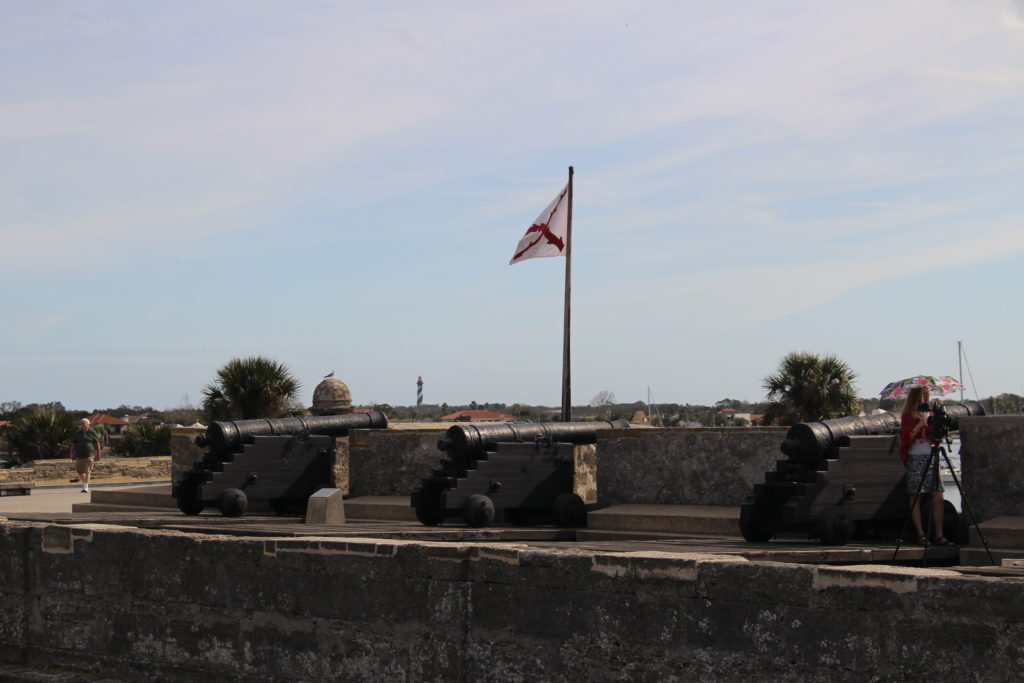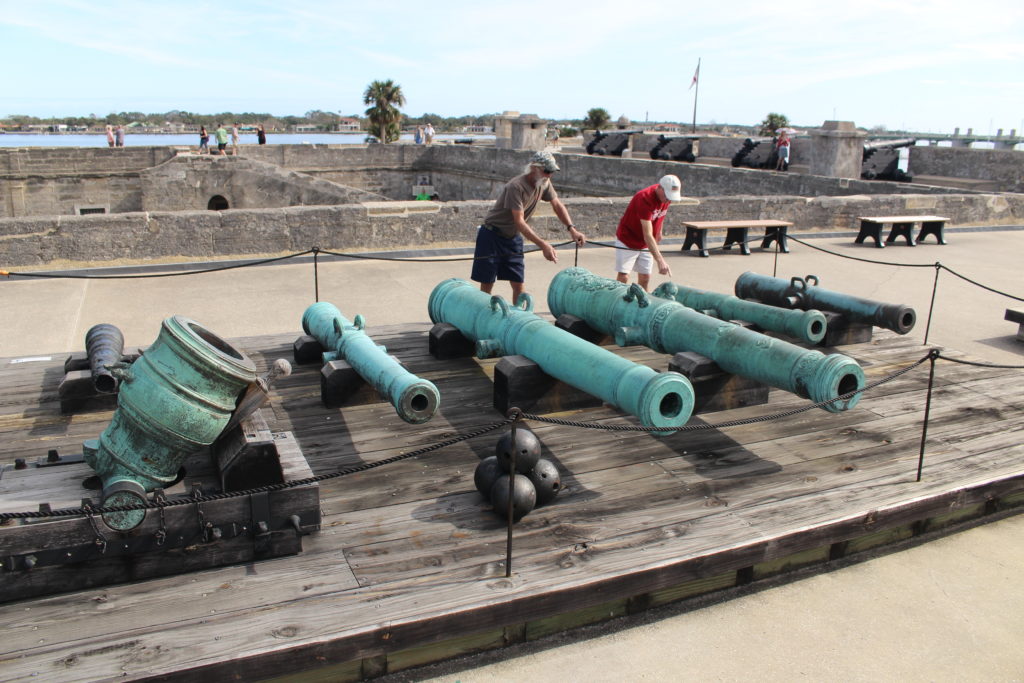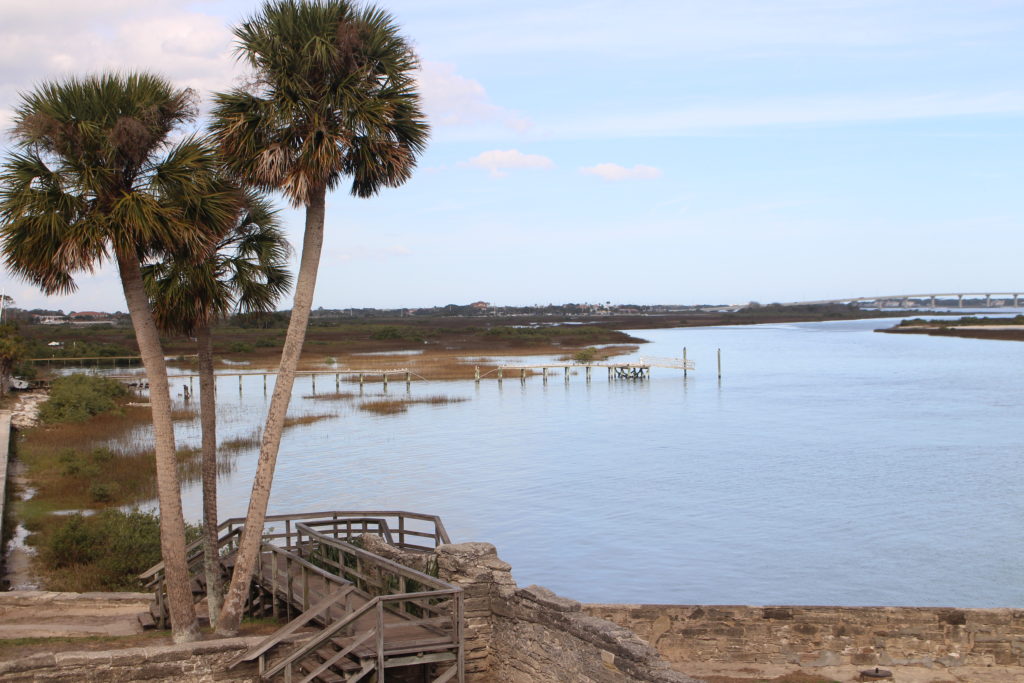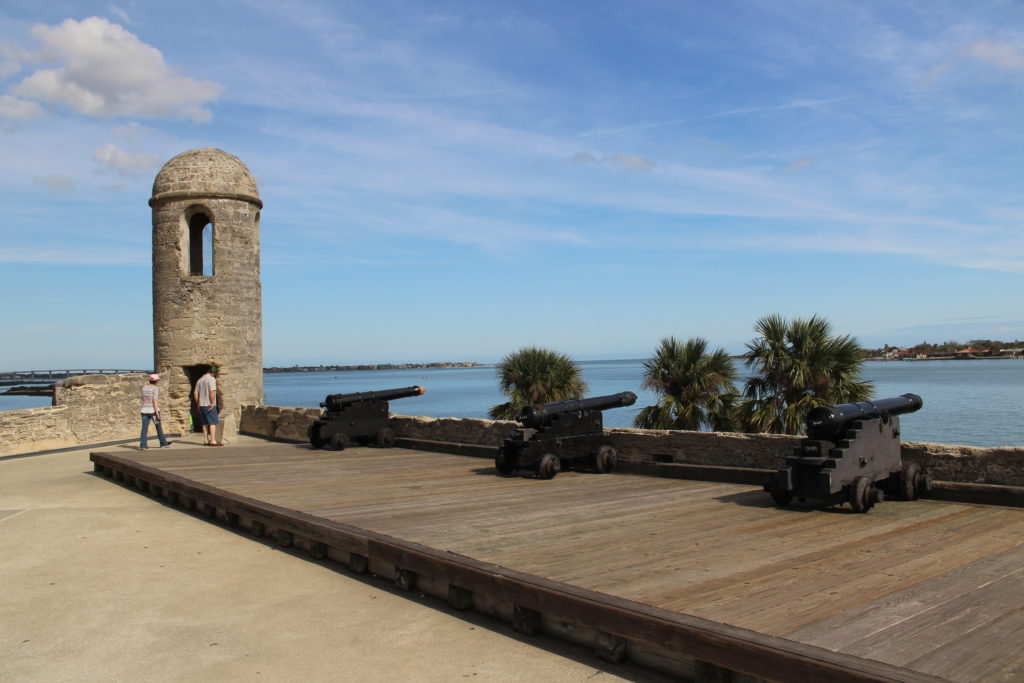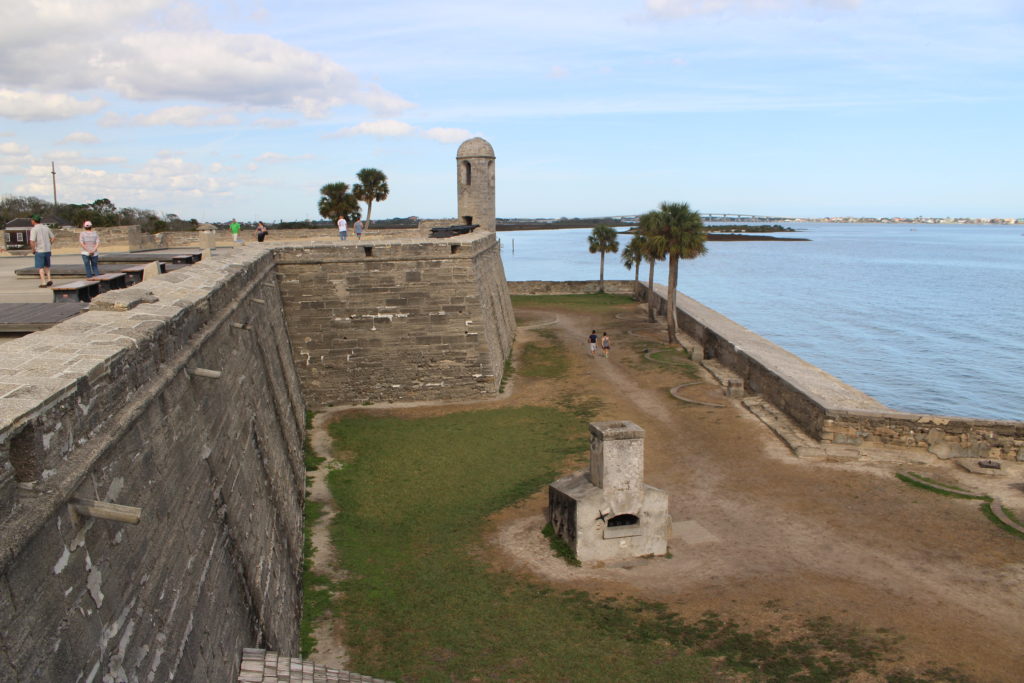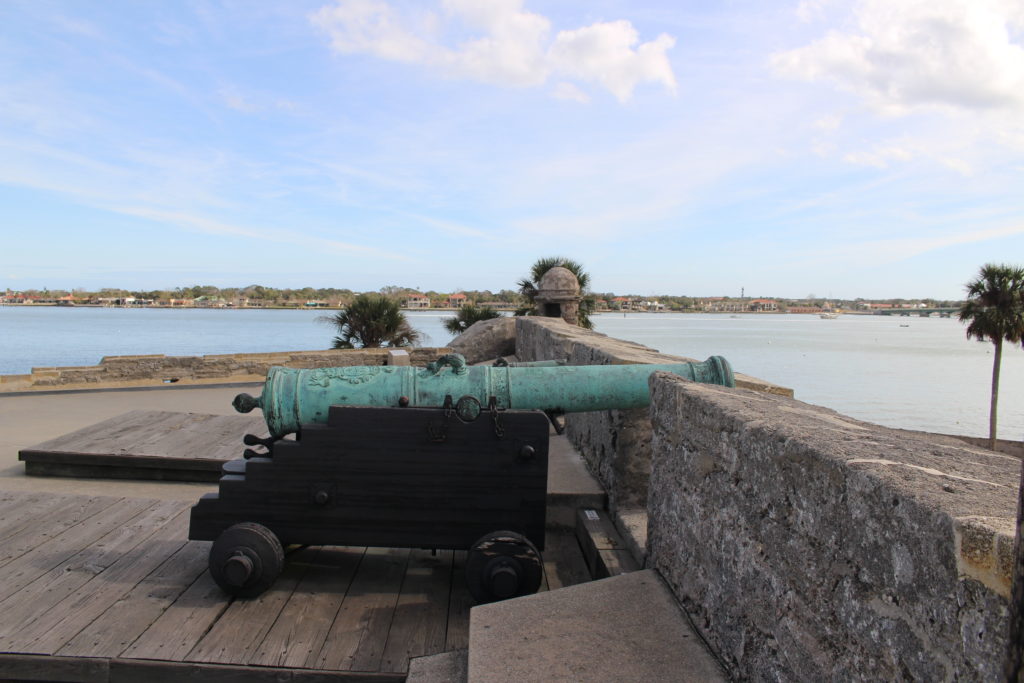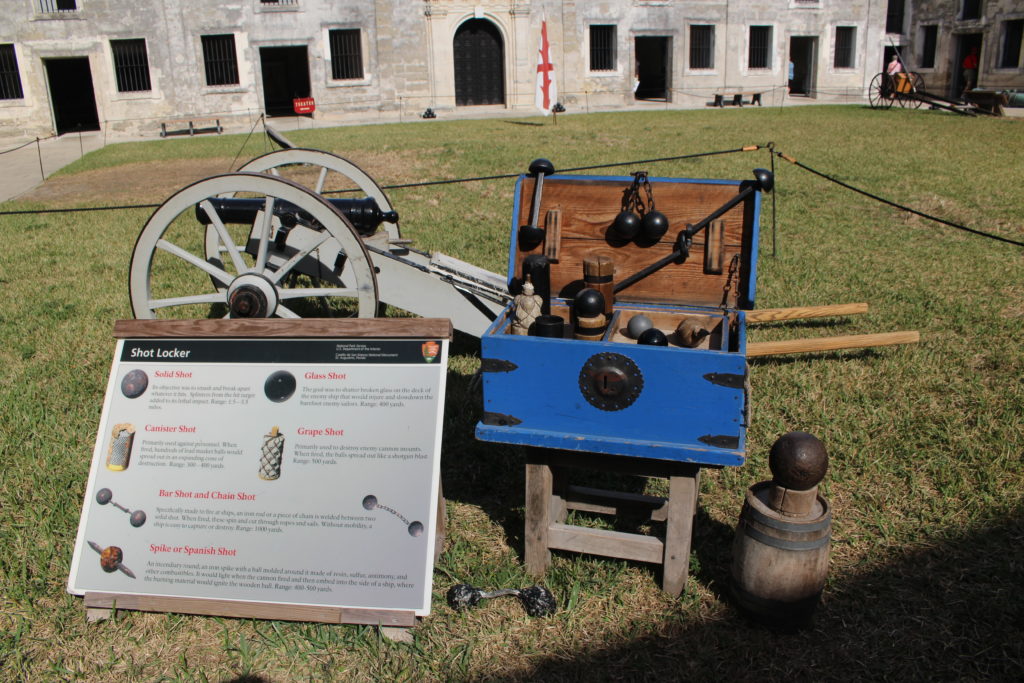When the French established a settlement at Fort Caroline in 1564, the Spanish decided they needed more of a presence in Florida. It obviously wasn’t enough that they had claimed the area in 1513. They needed a permanent settlement. So, in 1565 the Spanish established a settlement at St Augustine. St Augustine is the oldest permanent European settlement in the continental United States.
About 100 years after the settlement of the town, the Spanish realized that the earthen fort and palisades at St Augustine were not enough to protect the people of the settlement from Indian and British attacks. Consequently, they started construction on the Castillo de San Marcos in 1672.
Compared to Fort Frederica or Fort Caroline, Castillo de San Marcos is, indeed, a castle. Although there is an earthen wall around the exterior, the fort itself is made of coquina. Coquina is a rare but naturally occurring limestone that contains shells. It is very strong. The coquina was quarried and brought to St Augustine for use in the Castillo. The fortress is a hollow square with diamond-shaped bastions at each corner. The only way in and out is through the entrance which has two gates, an open narrow tunnel, a drawbridge, and a moat.
Although Castillo de San Marcos has never been captured, it has changed hands many times. The British tried, unsuccessfully, to lay siege to the fort twice. In 1763, the Spanish turned Castillo de San Marcos over to the British in exchange for Cuba. But, in 1783, at the end of the American Revolution, the Spanish got Florida and the Castillo back.
In 1821, Spain ceded Florida to the United States in return for non-interference in the Caribbean. The Americans renamed the Castillo Fort Marion. Indian prisoners stayed in the Castillo during the Seminole War of 1835-42. Confederate troops occupied the Castillo for a short time during the Civil War. During the Western war on the Indians and during the Spanish American War, the Castillo became a military prison.
In 1924, Fort Marion became a National Monument under the War Department. The War Department transferred ownership to the National Park Service in 1933. In 1942 the National Park Service restored the original name, Castillo de San Marcos.
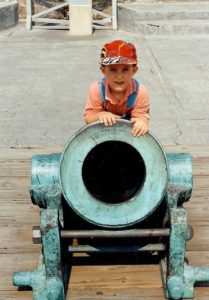
Tom and I had visited Castillo de San Marcos back in 1992, with John and my brother Steve, when we were on our way to Disneyworld. On our visit last week, it was exactly as we remembered it. There were swarms of tourists, even on a weekday in January, with trolleys and tour boats going by regularly. There is an admission charge to the Castillo, although it is free if you have one of the National Park passes. We watched the movie which focused on cannon and musket firing drills. Then we wandered through the rooms set up to describe the history of the fort during its various occupations.
The views from the bastions are wonderful. You can see across Matanzas Bay to the ocean and get a panoramic view of St. Augustine. Although there is a big parking lot next to the Castillo, people were waiting in line for a parking spot.
St Augustine is a very walkable downtown and is it worth spending some time there. There are lots of touristy spots, but there is also the oldest wooden schoolhouse in the United States, and the oldest house in St Augustine. There are many beautiful parks and gardens. The character of the city still reflects its vibrant Spanish heritage.

